Imagine a raging turf fire roaring through dry grass. Now picture if that fire could slip through a tiny gap behind your sofa or under your kitchen sink. That's exactly how fire spreads in buildings: not through open windows, but through hidden penetrations like pipes, cables, ducts, or even service voids destroying compartment boundaries designed to slow its progress.
Fire stopping, a vital part of passive fire protection, plugs these hidden paths. It ensures walls and floors maintain their fire-resistance rating when services pass through them. Here’s why that matters.
1. 🛡️ The Building-Regulations Mandate
In England and Wales, Approved Document B, Part B3 of the Building Regulations requires fire and smoke must not spread within concealed spaces and "fire stopping" is how you achieve that.
The Regulatory Reform (Fire Safety) Order 2005 even places legal responsibility on the "responsible person" (owner, manager) to identify fire risks including compromised compartmentation and address them.
2. 🔥 What Fire Stopping Actually Does
A firestop system restores resistance by filling penetrations like around water pipes, electrical cables, HVAC ducts or voids between structural elements.
These systems may use:
- Intumescent sealants (e.g., FR Acrylic, FR Graphite)
- Fire-rated boards (e.g., FR Boards)
- Mortars
- Putty Cord/Pads
- Pipe wraps and collars.
Each expands when heated, closing gaps and preserving the fire integrity of the building element.
3. 🔍 Certified & Competent Installations
Even the best products fail if installed incorrectly. That’s where BM TRADA’s Q-Mark fire‑stopping scheme comes in: installers undergo training, demonstrate competency, and commit to fitting fire-stopping systems by the book.
Fire safety auditors like the London Fire Brigade also emphasise maintaining fire‑resisting separation through proper compartmentation and sealing.
4. 🔄 Not “Set & Forget”
Fire stopping isn’t a one-time task. It requires ongoing checks just like fire doors especially after refurbishments where pipes or cables are moved. Experts recommend annual inspections to make sure penetrations remain sealed.
Even small accidental breaches can undermine the integrity of fire compartments and accelerate fire spread.
5. 🏆 Real-World Impact
Proper fire stopping is part of a layered protection strategy combining fire doors, sprinklers, alarms, and passive features to significantly reduce risk and save lives.
No matter how high-spec your insulation or how advanced your fire doors, a single unsealed cable tray or pipe chase can become a flaming highway letting fire spread uncontrolled through a building.
🎯 Why This Matters For You
- Property owners: Neglected penetrations will undermine compartmentation and could breach regulations.
- Designers & Specifiers: You must specify certified products and skilled installers (Q‑Mark or equivalent).
- Installers: Competency must be demonstrable through schemes like BM TRADA.
- Regulators & Fire Safety Managers: Regular auditing of penetrations ensures ongoing compliance and safety.
🔗 In Summary
Fire stopping isn’t just filler. It’s a critical first line of defense, legally mandated and technically complex. At Premier Passive Fire Product, our range from FR Silicone and Graphite sealants to Boards, Pipe Wraps, and Mortars are all certified and designed to work together to maintain a building’s fire integrity.
Ensure you're choosing certified products, trained installers, and ongoing inspections, the unbeatable trio for preventing fire spread through service penetrations.

